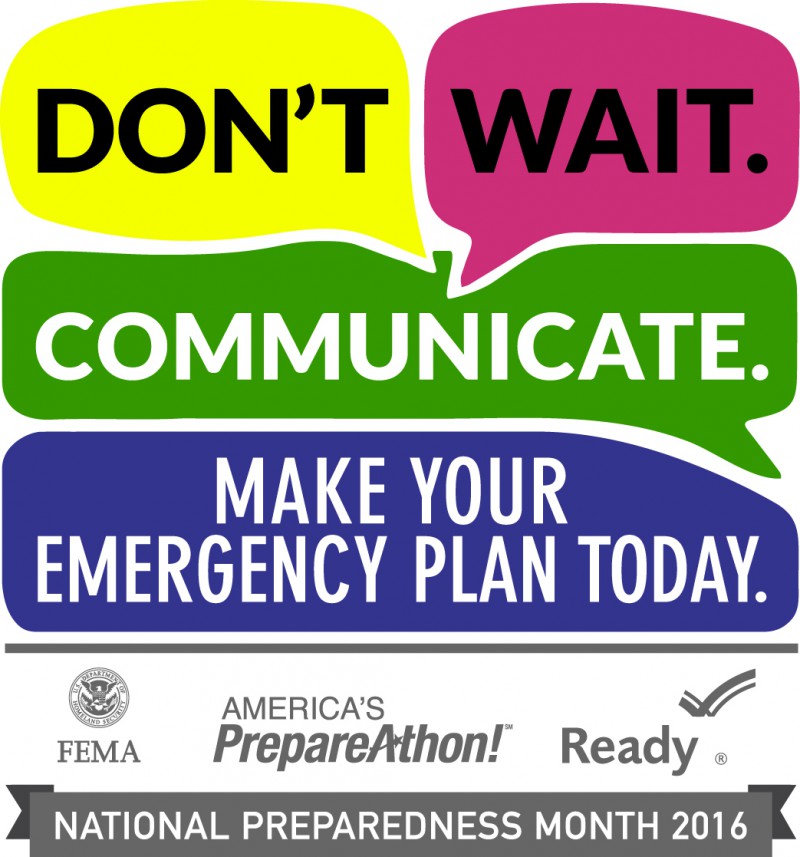September is recognized in the United States as National Preparedness Month. Sponsored by the Federal Emergency Management Agency (FEMA), the goal is to help individuals, families, and businesses be more prepared for and able to respond to any emergency, from natural disasters to terrorist attacks. Taking steps to ensure that your family is prepared for a potential disaster prevents you from being helpless if you are stuck in a situation where first responders are unable to reach you immediately. Having prepared individuals also helps the community as a whole recover in the shortest amount of time possible.
During these types of events children, the elderly, and those with disabilities are the most vulnerable, and taking the time to prepare could be critical in ensuring their safety as well as your own. While there are many steps that you can take, the three most recommended for readying yourself for any type of disaster include:
- Developing a Family Emergency Communication Plan – Since there is no guarantee that your family, or those in your care, will all be together at the time of an emergency, having a communication plan in place will help everyone to know what is expected of them, where they should go, who they should contact, and how to communicate should cell phones and the internet not be accessible. Resources for writing an emergency communication plan can be found here.
- Preparing a Disaster Supply Kit – While it may seem unnecessary when there are no signs of an emergency in sight, the reality is that you never know when a disaster will strike, and not having things like drinking water, medications, flashlights and batteries readily accessible will make the situation much worse for you and your family. FEMA’s guidelines recommended one gallon of water per person, per day, for at least three days, for both drinking and sanitation, but more information on what your kit should include can be found here and here.
- Purchasing a NOAA Weather Radio – Having any type of battery-powered radio is beneficial for receiving alerts and updates should the power and/or internet go out, but the National Weather Service has partnered with the Federal Communication Commission’s (FCC) Emergency Alert System so that the NOAA Weather Radio is a single source for comprehensive weather and emergency information. This means that you can be sure that you will have the most up-to-date information available to you, no matter what type of emergency unfolds. More information about the NOAA Weather Radio can be found here.
The time to prepare for an emergency is now, and even by only following these three steps, you and your family will be in a much better position to handle whatever disaster or emergency may occur. For more detailed information about preparing your family, FEMA’s Ready.gov website provides information tailored to specific needs such as people with disabilities, seniors, assisting children, business readiness, and even information for you pets.



Leave A Comment